André de Dienes' surreal, symbolic nudes
A visual exploration of dreamlike bodies, naturist visions, and the striking aesthetics of the midcentury nude


André de Dienes is best remembered for the ethereal beauty of his nude photography—images of women drifting through sun-drenched hillsides, reclining against boulders like dream fragments, their forms bathed in golden light or fractured by double exposure. But his legacy extends far beyond his haunting, surreal compositions. Born in Hungary in 1913, de Dienes began his photographic career in Paris and New York before moving to California in the 1940s, where he began to focus almost exclusively on nude studies. His work, spanning fashion, celebrity, fine art, and naturism, helped shape mid-century visual culture’s approach to the body—natural, expressive, and often mythic in tone.
De Dienes’ broader cultural impact is perhaps most visible in his early photographs of Marilyn Monroe, then Norma Jeane, taken in the years before her rise to stardom. These portraits are as intimate as they are iconic: windswept and laughing on a beach, pensive in the desert light, gazing past the lens. They helped construct the early visual language of Monroe's public identity, fusing vulnerability with vitality, natural beauty with stardom. But while Monroe became the cultural lightning rod, de Dienes remained devoted to the expressive possibilities of the nude figure—both in popular and subcultural spaces.

The surreal, symbolic nude
De Dienes was a technician and a dreamer. In contrast to the straightforward pin-up styles of the era, his nudes often ventured into the surreal. He favored dramatic poses, distant landscapes, and visual layering—images superimposed with others, limbs ghosted over dunes or trees. These techniques imbued his photographs with a mystical air, one that elevated the figure beyond objectification and toward metaphor. The body in his work is rarely static; it moves, yearns, emotes. In one image, a figure might seem to dissolve into cloud or stone; in another, her silhouette emerges from shadow like a spirit.
De Dienes’ idealized aesthetic was also narrowly defined. Nearly all of his subjects conformed to a specific vision of beauty—white, slender, and young—reflecting both the stylistic conventions and cultural exclusions of his era. This limited range was typical of midcentury visual culture, where certain bodies were elevated as symbols of freedom and others were rendered invisible. While his images are undeniably powerful, they also speak to a particular and exclusionary gaze that shaped much of photography at the time.
While much of his work featured professional models, de Dienes brought to his sessions a sensibility more aligned with fine art than fashion. He experimented in the darkroom, but also in tone: he asked his subjects to express moods, even write down their inner feelings.
A bridge to nudist culture
What makes de Dienes particularly significant to naturist history is his crossover into nudist media. During the 1950s and early 1960s, his work appeared in vintage nudist magazines including American Nudist Leader and Eden, both published by Mervin Mounce, a pioneering nudist figure based in the Pacific Northwest. These publications, typical of the era, mixed photo essays, lifestyle writing, and legal advocacy in service of normalizing the nudist movement.


De Dienes’ inclusion in these magazines was striking. His images stood out for their deliberate composition and overt artistry. At a time when most nudist photography sought to appear unposed and documentary-style—families playing volleyball, communal sunbathing—de Dienes offered something more enigmatic. His contributions gave these publications an unexpected visual depth, aligning the goals of social nudism with the expressive power of the nude as fine art.
Much of de Dienes’ nude work was shot with non-naturist professional models. Yet he also photographed individuals known within the nudist movement, blurring the line between lifestyle and performance. Among his most frequent muses was Diane Webber, also known by her modeling name Marguerite Empey. A former Playboy centerfold and dancer, Webber was also a committed nudist and a frequent fixture in nudist magazines of the time.

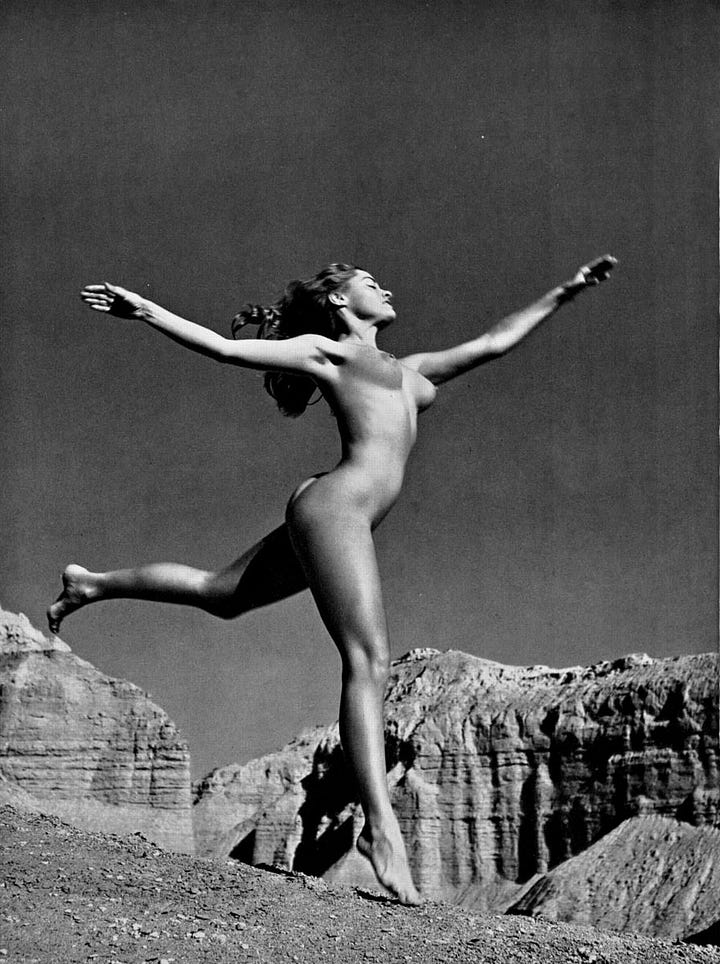
Photographing Webber allowed de Dienes to capture a rare blend of grace and authenticity. She could pose with the elegance of a trained model while embodying the natural ease of a lifelong nudist. In one of his most recognizable portraits, Webber appears reclining in the grass, her gaze both serene and knowing. Unlike more mannered pin-up work, these images resonate with a grounded confidence—a woman not performing nudity, but inhabiting it.


In this way, de Dienes’ work helped form a kind of visual bridge between the performative world of glamour photography and the lived experience of naturism. His models were often idealized, but they were not objectified. They were agents of their own presence, posed but not passive, and often photographed in wild or sacred landscapes that suggested liberation, not voyeurism.
A lasting cultural impression
Today, de Dienes’ photographs remain influential not only for their beauty, but for what they represent: a moment in mid-century culture when the nude was renegotiated as something expressive, surreal, and even spiritual. His images, especially those taken outdoors, helped reframe the conversation about the naked body in public life—whether in the pages of a nudist magazine or in the living room of a coffee table photobook collector.
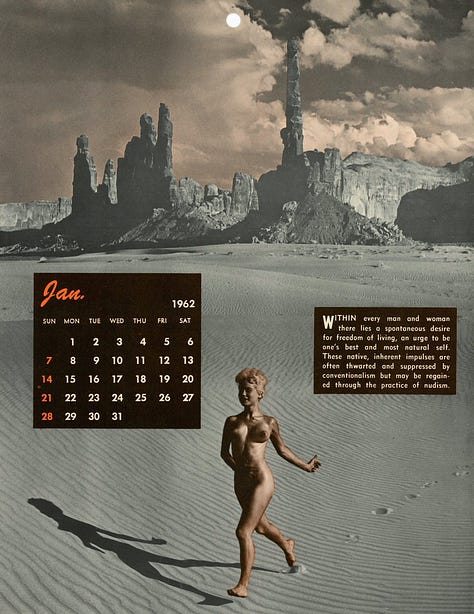

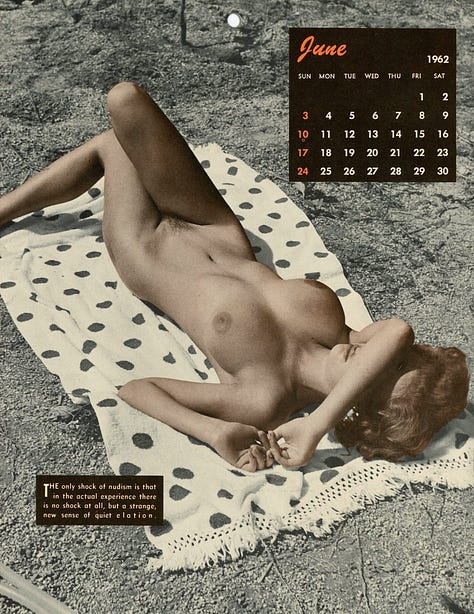
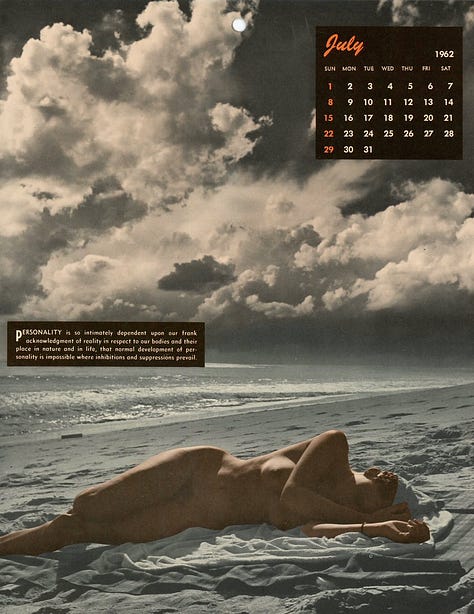
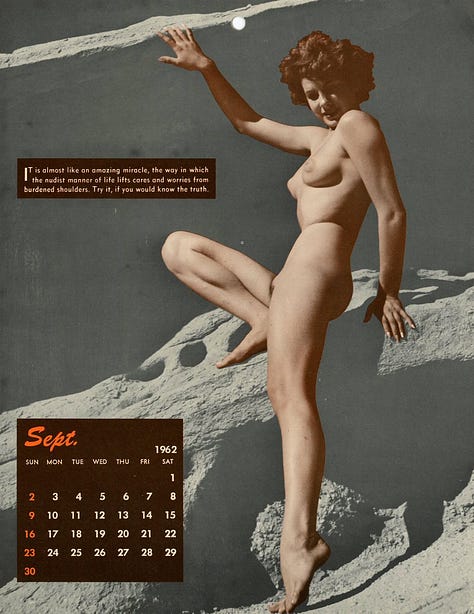
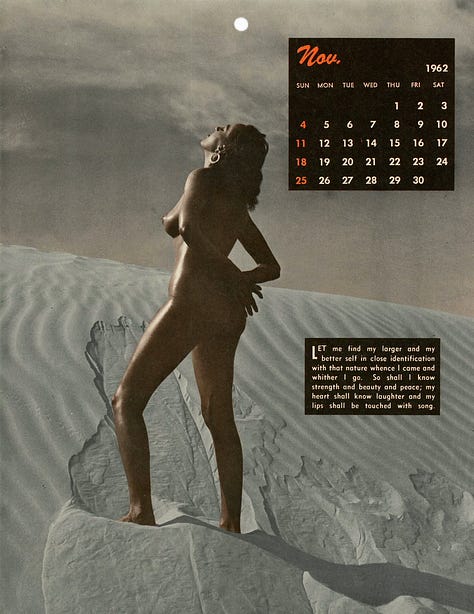
De Dienes died in 1985, but his work lives on in gallery exhibitions, art books, and digital archives. Taschen’s two-volume Marilyn monograph includes many of his most iconic shots, and retrospectives continue to showcase his contribution to both art photography and nudist media. For naturists, he represents a rare and valuable figure: an artist who took the naked body seriously—not just as form or fantasy, but as something worthy of mood, of metaphor, of mystery.
In the end, his images do what the best art does: they leave room for feeling. They remind us that the nude can be more than naked—it can be meaningful, mystical, and profoundly human. 🪐
Disclosure: The photographs by André de Dienes featured in this article are used solely for informational and documentary purposes. I do not claim any ownership or rights to these images. All rights are retained by the estate of André de Dienes.



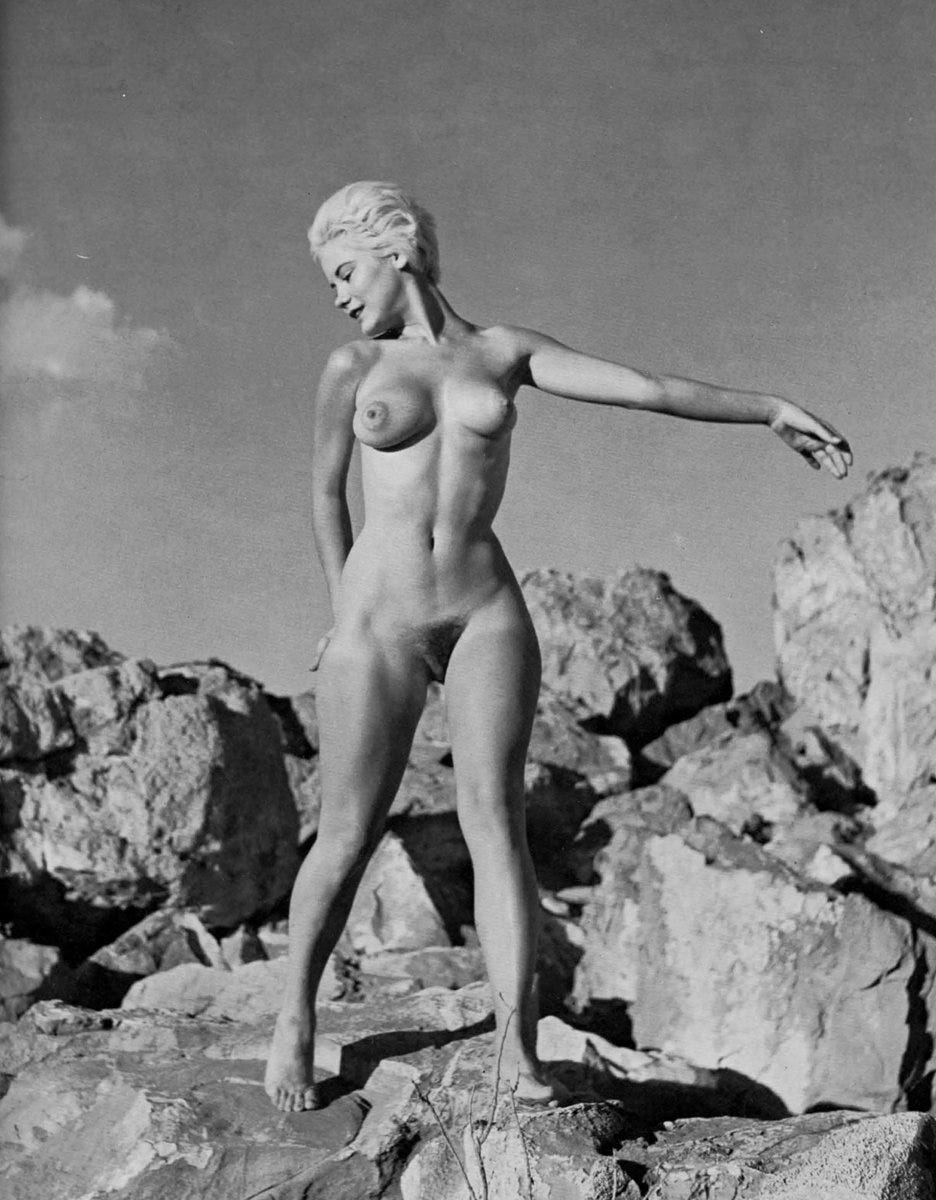

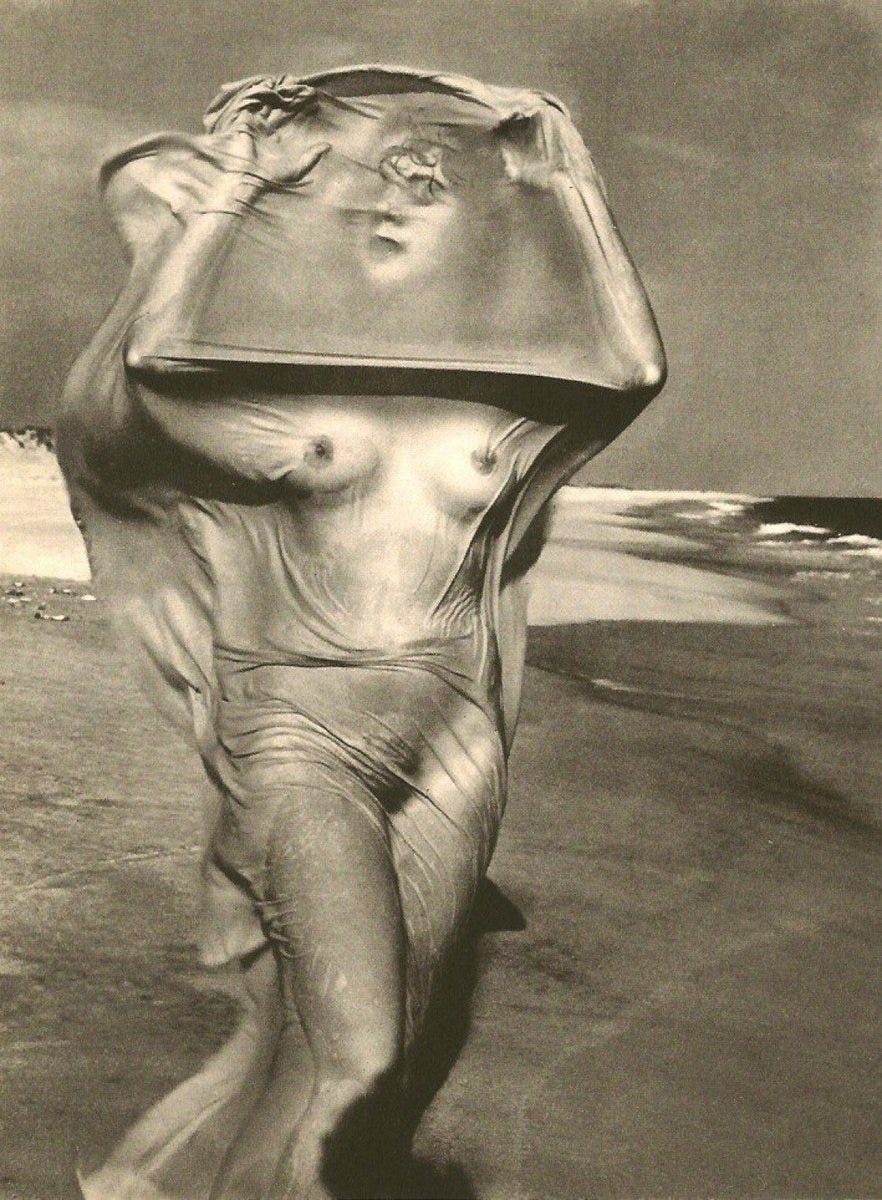
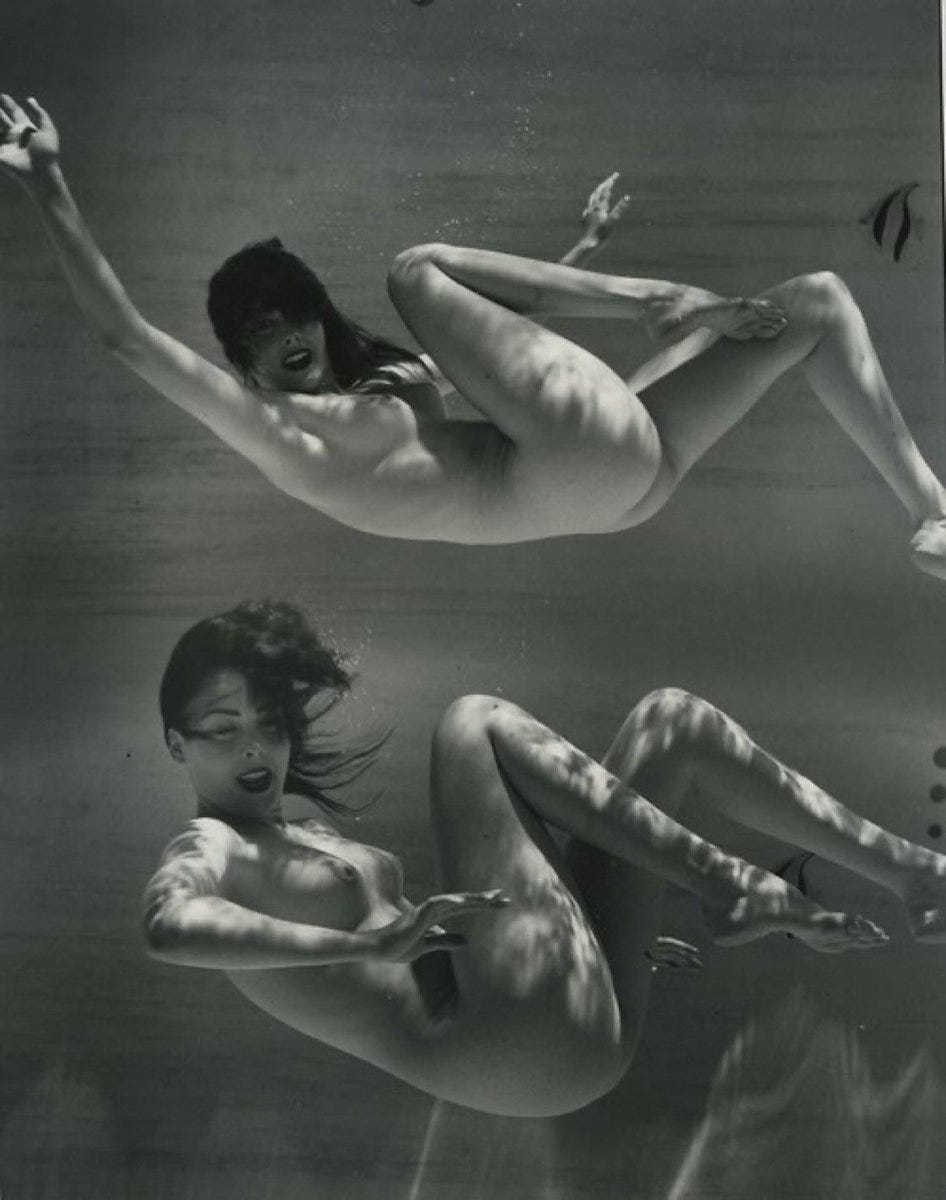
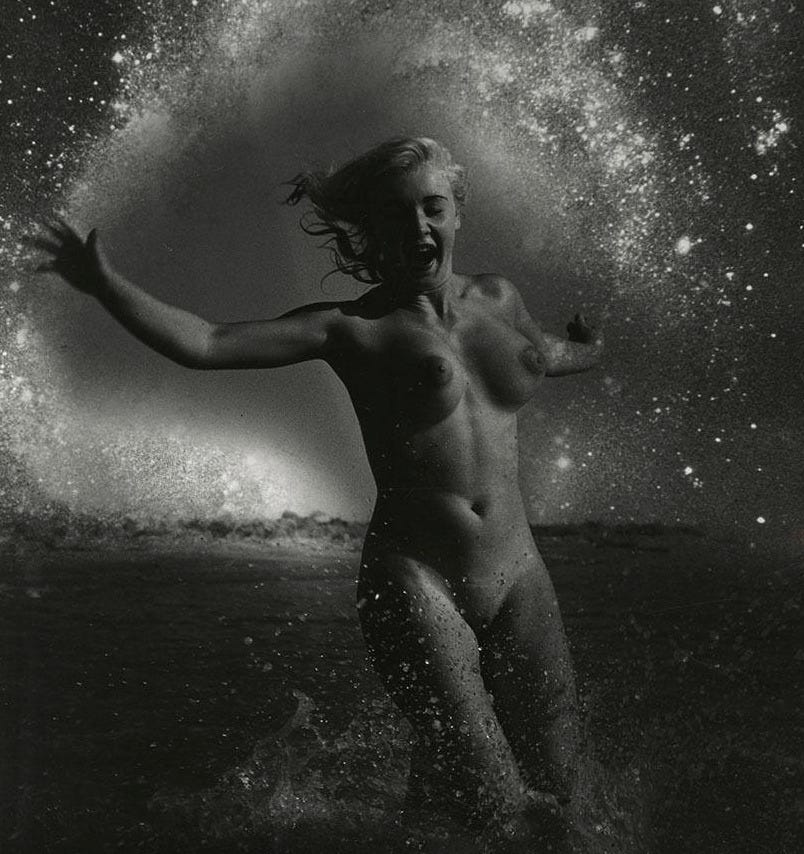

I have frequently been pleased by the writing in this journal, but today I am particularly impressed by your writing here. This passage is particularly impressive:
« In this way, de Dienes’ work helped form a kind of visual bridge between the performative world of glamour photography and the lived experience of naturism. His models were often idealized, but they were not objectified. They were agents of their own presence, posed but not passive, and often photographed in wild or sacred landscapes that suggested liberation, not voyeurism. »
This is clarity of nuance!
Bravo!!!
Regards,
Thomas
Great article. I was unaware of his contributions to social nudism.